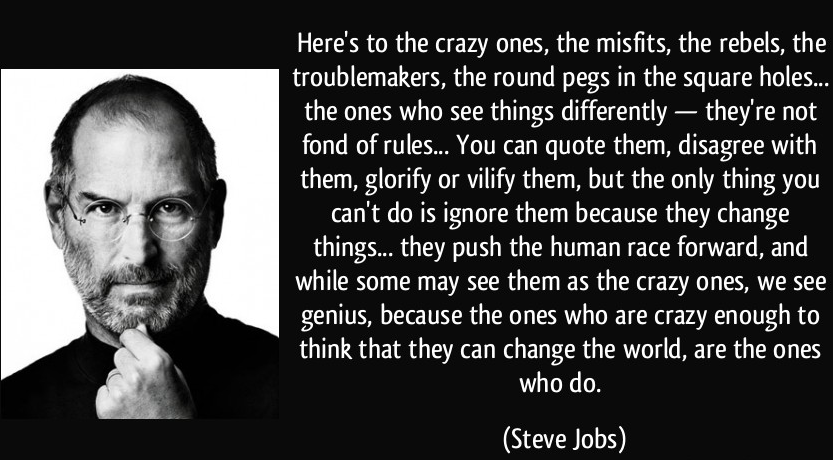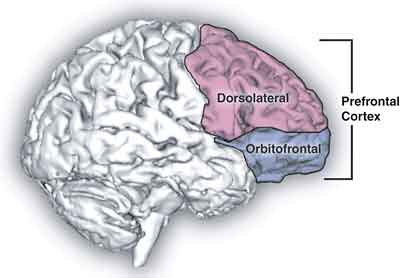The Holy Grail: Executive Function

One day I had an epiphany
I had been working with kids for many years, reading everything I could get my hands on about learning, the brain, ADHD, autism, dyslexia, sensitivities, social emotional issues, etc… And it hit me.
Now, what I’m about to tell you may not seem as awesome as it is, so I want to prepare you to digest this epiphany with the gravity it deserves.
You see, I realized that ALL STRUGGLING STUDENTS had ONE THING IN COMMON.
It doesn’t matter if they have ADHD, autism, aspergers, dyslexia, sensory integration issues, processing disorders, anxiety, depression, or no diagnosis at all… they all share this ONE THING.
Why is this so important? Because, if we can agree that this one thing is true, then we can approach how we help kids more effectively.
In other words, we can waste less time doing things that don’t make a difference (like many of the interventions out there, including some tutoring, remedial programs, pull-out programs, futile punishments, rewards & incentives, etc.).
And if we waste less time on meaningless interventions, we can spend more time doing things that matter for our kids. (Do not misunderstand me, there are many great interventions and wonderful professionals out there, but there is way too much bs floating around.)
This might sound obvious, but if you knew how much the quality of your child’s education was diluted, you’d be disgusted, and this prospect of one common denominator would really excite you right now.
The ONE THING all these kids have in common is that they all struggle with Executive Function. If this is true, and if we understand EF properly, then we can do a much better job helping our kids.
But there’s a huge problem
The problem is: parents and teachers don’t understand what EF is all about. Most don’t even know the term exists, and those who think they know about it often don’t know enough for it to be helpful to their child.
It’s 2016, and EF should be a familiar concept by now. Why isn’t it? Well, that’s another story for another time. What’s important now is that you dive into this article, where I’ll teach you all about EF, in plain English (which is rare). I’ll teach you what helps and what doesn’t. Let’s continue…
This ain’t a joke
Why is this topic so important? EF deficits are a real threat to struggling students. Part of the reason I’m so passionate about this topic is that if these kids don’t figure out how to work with these challenges, they will not be able to actualize their goals and dreams in life. This is no joke, it’s deadly serious. It’s terrifying to watch a bright future get dimmer. Consequences range from countless addictions, to deep emotional problems, to mental illness, to one’s child turning 40 – still living in the basement – playing video games all day- and paralyzed in victim roles – unable to create an independent adulthood. These are consequences that real people deal with all the time. Being immobilized as an adult is a horrible place to be.
On the other hand, if these kids do get the right EF support, the sky is the limit. They are thus empowered to effectively develop their talents, gifts, passions, and interests to launch a happy, healthy and bright future doing work that matters. They can shine!
IMAGE: Kid trying hard, frustrated, high school disillusion, go in wrong directions, playing vdeo games in basement
IMAGE Kid with right support, successful life
Executive Function is the most important concept adults must understand in order to help struggling students succeed
Outside-the-box learners need outside-the-box solutions. Cookie cutter doesn’t cut it. These students think, learn and process differently, and need strategies that are tailored to their unique personalities. These children tend to develop asynchronously (see below) within the various aspects of Executive Function, and when this is properly taken into consideration, we can empower these students with solutions that work.
The big problem for students who struggle with EF is that, by it’s very nature, it can prevent them from reaching their goals and therefore their potential. However, with the right support, we can help our children manage, compensate for and get accommodations for EF challenges so they can build a remarkable life. Keep reading.
Asynchrony
Traditional educational mindsets would have us believe that kids “should” meet developmental standards at predictable times. For example, 3rd graders should learn their multiplication tables and cursive, 5th graders should learn to write a 5 paragraph essay, etc.. Kids should be at “grade level” in various areas. But the reality is that, while there are developmental propensities, many people develop quite “asynchronously“, or at their own pace. For example, it’s common for me to work with kids who have high IQs but delayed processing speeds, because this particular discrepancy (asynchrony) causes big problems. These kids are often misunderstood, as evidenced by comments like, “I know she’s smart, but she’s lazy. She needs to work harder.” Once we understand EF and asynchrony, we finally understand that it’s not about laziness at all and we can now be more helpful (more on the ‘laziness lie’ in a bit).
Anyhow, asynchronous development is definitely not “bad”. It’s normal to have areas of strength and weakness. Unfortunately, big deficits in certain areas of Executive Function can severely impact one’s future, so getting the right help is critical.
The Shame Game
Shame may seem off topic, but it’s completely relevant because if you shame your child in this way, it’s not helping. I see 3 common shame messages that are fraught with misunderstanding of EF:
- The Laziness Lie – Here, adults will directly or indirectly communicate to a child that he is lazy.
- Try Harder – Here, adults tell a child that they just need to put in more effort
- Don’t Care – Here, adults communicate to a child that they must not care about school, grades, learning, etc.. If you really cared, you’d do something about it.
Look, this list certainly isn’t intended to shame parents, so if you communicate these messages to your child, don’t spend too much time feeling guilty. Don’t overthink it. The point is to see if we can understand that our kids are challenged by developmental executive function issues, we can look at the situation in a whole new light. We can see that there is nothing for them to be ashamed of. Now we can look for more effective and appropriate ways support our kids.
The point is that these shaming messages make kids feel bad and kill their motivation. Ironically, adults use these 3 messages in a frustrated effort to motivate kids, to get it through their thick skulls that there are consequences if kids don’t turn it around.
What is EF? 4 Simple Definitions
Now we’re ready to define Executive Function a bit. Unfortunately, most of the literature about EF is not written in plain English, thus making access to this information more difficult for parents and educators. Experts in EF use clinical language that the layperson can’t easily digest. So here are some simple ways to define Executive Function:- Getting stuff done.
- The brain’s ability to take the steps necessary to accomplish a multi-step task or goal (like homework, writing a paper or cleaning a room).
- Self regulating: This is basically self-control. Ability to regulate or manage thoughts, emotions, and actions in order to accomplish goals and get your needs & wants met in the long term.
- To “execute” tasks that have lots of moving parts.
EF homework example
To make EF more clear, let’s explore how it might relate to homework. “Doing homework” sounds like one thing, but it’s really a combination of many smaller tasks. In order to “execute” homework, one must be able to:
- Focus on the teacher enough to clearly understand what the homework is (a lot of kids don’t even register the homework expectations)
- Record the homework accurately (usually in a planner, but many kids like to think they can rely on their memory)
- Remember to look at the planner (a lot of kids don’t even remember to look at it)
- Start doing the homework (a lot of kids have trouble getting started)
- Continue doing the homework, without getting distracted and derailed. Be persistent (many kids have a bunch of “incompletes”)
- Completing the homework and checking it over (many kids don’t know how to be reflective)
- Get their name on the assignment (many kids don’t get credit just because they forget their name)
- Get it into the correct folder (many kids lose it)
- Get it back in the backpack and back to school
- Get it out of the backpack and folder and into the teacher’s hands
- NOW, and only now, we can say that the homework is “finished” or “complete”
EF in the brain
The prefrontal cortex is the region in the brain where most EF takes place. This is a whopping ⅓ of your brain and if you put your hand over your forehead right now, you’ll be covering this general area.
Now, imagine an old fashioned phone operator, whose job it is to connect the right lines. You know, a human being who sat in front of a board with wires all over the place. They would be the ones who could “connect the line”. Similarly, the brain must be able to manage countless “circuits” in order to execute multi-step tasks, like homework, using a planner effectively, completing chores, tracking details of a project, etc..

Many of the parents I work with are afraid that their child won’t “grow out of it”. Fortunately, the PFC (pre-frontal cortex) continues to develop until we are 25 or 30 years old. With the right interventions, the brain responds to these demands by developing a greater ability to execute (plan, organize, manage time, set goals, etc.)
You see, the brain is very “plastic”, we can change it. It responds to the “use it or lose it” principle. The activities we choose demand certain things from our brain, and the regions of the brain that we “use”, grow in response. It’s similar to exercising – the muscles that you use and push are the ones that grow. For example, cyclists often have skinny arm muscles and giant leg muscles.
Obviously, they aren’t spending hours in the gym doing bicep curls, but they are putting a huge demand on their legs.
In order to help our kids develop their EF muscles, we must teach them the right exercises and give them the right tools.
Aspects of EF
Q: How do we help someone to do what they need to do, in their own best interest, when they seem like they can’t or won’t?
A: Consistent babysteps in the right direction. Working the right muscles. Using the right tools.
You see, the brain does change. It responds to the demands put upon it. Fortunately, EF continues to develop well into the 20s, which means there is plenty of hope for your child. The following is how I break down the various aspects of EF, aka the things your brain must do in order for you to “execute” complex tasks. (note, there is a lot of overlap).
- Planning – The ability to have a realistic perception of the steps necessary to accomplish a goal or task.
- Time management - The ability to manage time or to have a realistic perception of how long things take. Important in planning and scheduling too.
- Organization – The ability to create systems of doing things or keeping track of things, that are organized enough so goals can be met effectively.
- Prioritization – The ability to know and do what is most important at any given time.
- Inhibition – This refers to one’s ability to hold back, to pause, to think before you act, to not be too impulsive, to have self-restraint. Inhibit thoughts, emotions, behaviors that are inappropriate or that go against long term goals and wellbeing. When we do not inhibit well we are thought to be impulsive or hyperactive.
- Focus – The ability to manage and sustain attention, focus, concentrate, be “on task”, stick to it. Resisting temptation to shift when trying to focus, avoid distractions, redirect thoughts.
- Task initiation – Self-starting or activation. Getting the ball rolling, getting the train moving.
- Task persistence - Continuing to try until finished, working to completion.
- Transitions – The ability to shift effectively from activity to activity.
- Working memory - Verbal and visual strategies that help us keep things in mind as we work through things. It’s like juggling balls, being able to track the important details during a process. Includes self-talk and visual imagery.
- Attention to details – Remembering and managing important details.
- Reflection – This refers to one’s ability to take a step back and reflect in order to problem solve. It also refers to self-checking (think checking work in math for example). Reflection is all about self-awareness, consciousness, mindfulness, introspection.
- Emotional regulation - Having tools to truly regulate and work through challenging emotions.
Good Things Come to Those Who Wait
But poor EF makes it hard to wait. Do you ever reach a boiling point and yell at your kid, “Will ya just wait a second! Jeez, hold on! Just stop, please!” Stop. Pause. Wait. In order to execute a task, you must have the ability to pause for a moment, to inhibit, to hold back a bit, to “think before you act”, “control yourself.” People who struggle with EF often have a hard time waiting, and it causes all sorts of problems. READY. FIRE. AIM. Umm, that order doesn’t work. It’s a thoughtless reaction. Bad decisions are made. These are the kids who puzzle you because they don’t seem to “learn from their mistakes.” We must learn not to simply react. We must learn to pause, to create a space between stimulus and response so we can respond mindfully. As any parent of an ADHD kid can attest, you can’t simply wave a magic wand and get your kid to learn to wait. Again, the consequences of this are no joke.What works?
- Foundations of strong EF: Restful sleep, nourishing food, adequate exercise.
- Effective routines, predictability, groundedness (routines for updating planners, overhauling backpacks, homework, studying, transitions, waking up, bedtime, fitness, etc.)
- Metacognition – Understanding of one’s own thought life and emotional needs. Implementation of emotional regulation practices.
- Personalized systems to effectively manage backpack, folders, planners, sacred study space, homework, etc.
- Ownership and buy-in.
- Compassionate support.
- Visual and auditory tips, tricks and tools.
- If binders don’t work for you, replace with simple color coded folder system
- Flag books with stickies. Flag and label important papers so they stand out visually in backpack.
- Outta sight, outta mind. Therefore, label everything BIG AND BRIGHT.
- Draw your notes. Great for visual kids.
- Make an archive (see blog).
- Use digital recorders to help you study.
- Study partners work wonders.
- Chunking assignments down into bitesize pieces.
- Make a plan even when you don’t want to.
- Self advocacy and advocacy from supportive people (Know your rights. Start with IDEA.)
- Microsuccesses. Look for all small successes and build upon them. Make goals reachable.
- Timers and alarms.
- The BEST tool ever: Mindfulness. Meditation works wonders. Period.
What makes it worse?
- Processed foods. Sleep problems, electronics interfering with sleep. Lack of exercise.
- Stress, overwhelm, dysregulation, adrenal fatigue.
- Sensory issues, sensory overwhelm.
- Useless busywork, meaningless assignments and misinformed adults.
- Unclear expectations.
- Shame.
- Fear Resistance, avoidance, procrastination, unwillingness.
- Inability to articulate systems. Lacking ownership and buyin with system development.

Systems checklist
I use this often with my students. This serves as a guide to explore important areas to problem solve within. Feel free to cut this out and keep it handy:
- Foundations How is your sleep (electronics?)? Nutrition? Fitness?
- Backpack Overhaul completely once a week, folders, papers, etc.
- Planner How well is it working and being used? Update long term and short term.
- Routines Is study routine/workflow optimal? Manageable?
- Grades Check online grades at least once a week? Make a to do list.
- Advocacy Who do you need to communicate with?
- SSS How effective is your Sacred Study Space?
- Relationships Family, friends, how’s it going? What do you need?
- Stress What are your biggest stresses lately? What is overwhelming or frustrating? Minimize? Reframe? Breathe. What are solutions?
- Beliefs Limiting? Scarcity? Abundance? Growth or fixed mindset? Selftalk, defaults, reframe.
- Technology Is computer optimized for school? Page blocker? Distraction free? Tabs/bookmarks for school? Online calendar set up?
Below you’ll find my EF Cheatsheet Resource for quick reference. It’s a PDF you download, print and keep handy. Please share it generously with anyone you think it would help.
Try this
Teach someone about the key takeaways you got form this article. Teaching someone else is one of the most powerful ways to learn anything. You will reinforce your learning while helping another person.

Click HERE for your free printable download of the “EF In-Depth Cheatsheet”
HEY! What are your thoughts? Please share at least one idea below. Thanks!
Want to support my mission? Please click to *share* this article with friends

